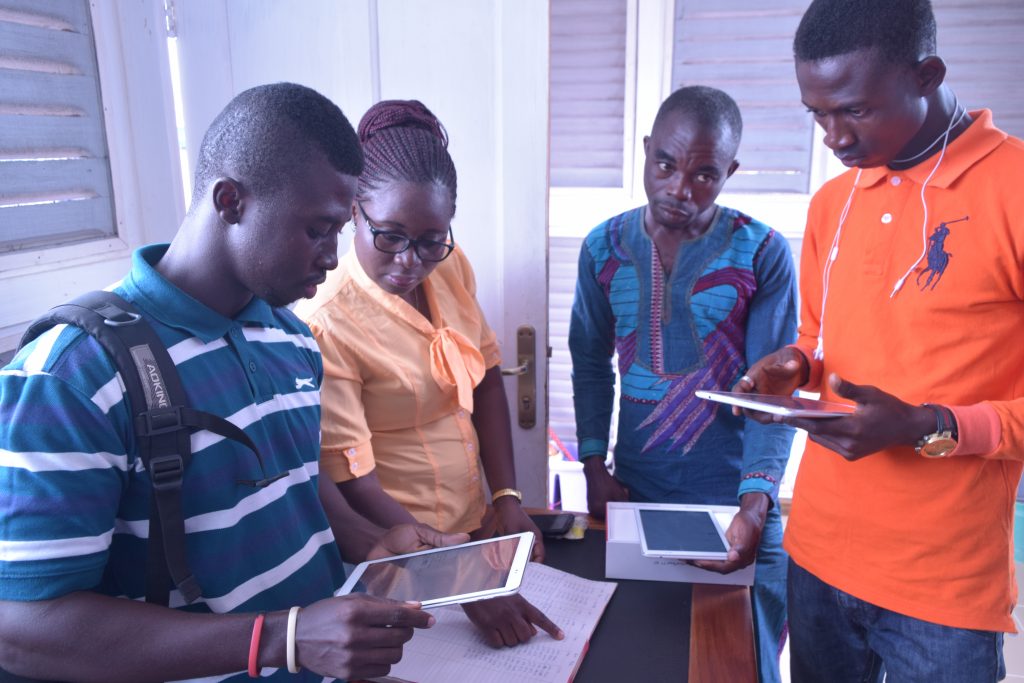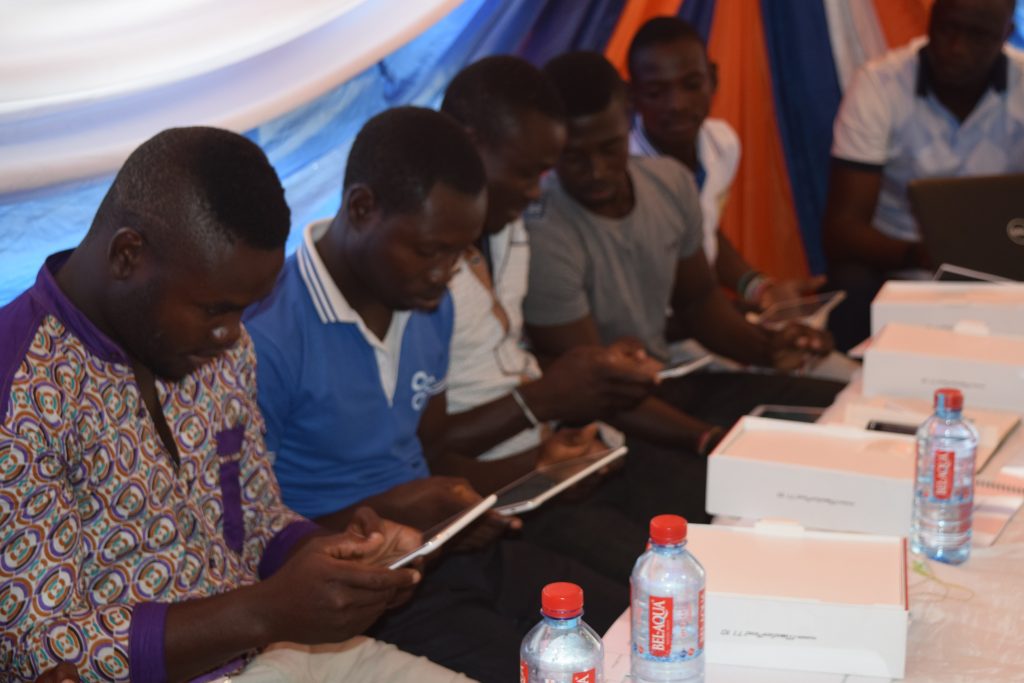This is a guest blog by Francis Tetteh-Zomayi, Cluster Manager, Field Operations, Safe Water Network. Safe Water Network, which works alongside communities in Ghana and India, providing over a quarter of a million people daily access to safe water through their Safe Water Stations – has a community-level water treatment facility that produces high-quality water sold at affordable rates. Safe Water Network is also a grantee of the Mobile for Development Utilities Innovation Fund.
Paul is the operator of a H2OME! water station in Boamang, in the Ashanti Region of Ghana. When Paul wakes up at 04:00 he checks his Android phone, messages his brother on WhatsApp, and posts a selfie with his daughter on Facebook. However, when Paul goes to work at the Boamang water station, he records information like water sales and meter readings in a paper logbook. Once a week, his supervisor, Emmanuel, visits Boamang, reviews Paul’s records, and then copies the information into a computer spreadsheet. This process, which happens at 37 water stations clustered across Ghana, is time-consuming and prone to human error.
As one of two Cluster Managers of Safe Water Network Field Operations, I oversee 27 Safe Water Stations in the Ashanti and Western Regions of Ghana. I review the data provided by Paul and Emmanuel to improve Station operations and financial viability. My job depends on the accuracy of data that Paul collects and Emmanuel’s ability to review and analyse that data efficiently. Meeting the deadline to submit my business analysis reports at the end of each month is always a challenge because of the long process of review and analysis.
With support from the GSMA Mobile for Development Utilities Innovation Fund, Safe Water Network is moving from this paper-based reporting system to a mobile one in collaboration with mWater, an organisation that uses technology and data for water and health. In Kumasi, Ghana in July 2016, we worked with operators and their supervisors to troubleshoot a beta version of our mobile monitoring app. Although previous experience levels using Android mobile devices was mixed, all participants felt comfortable using their Huawei tablets and the mWater app at the end of the three-day training. I vividly recall that after the first day of training, my colleague Fortune Ahiagble, Cluster Manager for the Volta Region said, “It’s a source of motivation for the operators. They are being recognised as important parts of the organisation and given tablets.” He had no idea of the ‘controlled jubilations’ going on in my mind. Finally, my worst nightmares will be gone forever. My life just got a little less complex.
The operators were able to field test the Daily Operator Form at three stations near the training site – Bonwire, Adanwomase, and Asonomaso. The Daily Operator Form captures all the data that operators collect about the station operations and financials on a daily basis. Their supervisors review the submitted forms and work with the operators to correct any inaccuracies in the data.
Attendees were also trained on an exciting new feature of the mobile monitoring app – issue reporting. The mobile app will track when breakdowns happen and when they are resolved and all the steps in between. The data collected in this feature will allow us to analyse the maintenance and repair supply chain and technical support systems to increase efficiency and minimise downtime. In our business, downtime means that a station cannot supply water to those who need it, which has real consequences for people’s health and well-being, so this is a critical new feature for us.
The entire data collection and analysis process is now more efficient. Supervisors will no longer need to travel to each station to review data collected by operators. They will no longer need to manually input data from logbooks into digital forms. They will be able to review data collection remotely, identify problems more quickly, and analyse and respond to data more efficiently. Sussana Mensah, a Supervisor for the Ashanti Region said, “I really like this. It makes my job simpler.” Now, I will have access to all data at a click of a button. My team can respond to issues quickly and I don’t need to wait for the end of month to get access to data. This improves our operations so that we can provide the 200,000 people living in these communities with access to safe water.
The most exciting thing about the roll out of this mobile monitoring system is that it can be easily replicated as we build more stations. In the future, the system can be used by others who implement water stations in other geographies as well.



